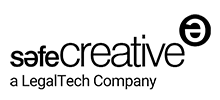Kari Steihaug
Book
/
Arnoldsche
Monograph
Published: 30.05.2023
- Editor:
- Nina M. Schjønsby
- Text by:
- Monica Aasprong, Ingvill Henmo, Anne Karin Jortveit, Aasne Linnestå, Halvor Nordby, Kjetil Røed, Cecilie Skeide, Kari Steihaug
- Edited by:
- Arnoldshe Art Publishers
- Edited at:
- Stuttgart
- Edited on:
- 2023
- Technical data:
- 144 pp., 22 x 28 cm, 98 ills. Cover Swiss binding. English / German.
- ISBN / ISSN:
- 978-3-89790-684-6
- Price:
- from 38 €
- Order:
- Arnoldsche Art Publishers
- Order:
- 20% Discount for Klimt02 members
Kari Steihaug, "Quai Henri IV" (2018) from the series "Does anyone know that you are coming". Hand tufting, 250 × 200 cm. Photo: Thomas Tveter
© By the author. Read Klimt02.net Copyright.

This monograph on Kari Steihaug (*1962, Oslo), published by Arnoldsche Art Publishers, brings together twenty-five years of work and provides the first comprehensive overview in English of the renowned Norwegian textile artist's oeuvre.
>> Buy it here and enjoy a 20% discount for Klimt02 members
In Kari Steihaug’s practice, the overlooked plays a significant role. Things that have been set aside, unfinished projects, and objects that are worn out or frayed are all carefully brought to the fore. This is evident in the choice of materials with which the textile artist works: in her work are worn-out woollen garments, faded curtains, unfinished knitwear, or even fragments of glass found on a beach, which she stores in archives and arranges in new contexts. The artist also uses techniques such as knitting, darning, tufting and crocheting; she unravels clothing, drawing or writing with the thread and allows it to twine in new directions.
In Steihaug’s works, found materials take on a new value and expanded meaning. Yet we also sense that the materials used carry within them myriad stories about lives once lived. By embracing imperfection, the works of Kari Steihaug become a counterbalance to the galloping consumer culture of our time.
The works create a space in which we as observers can immerse ourselves; they arouse associations and memories. Steihaug’s view of that which is often seen as worthless in our culture is contagious; she enables us to see with fresh eyes what surrounds us in our everyday lives. Some hundred mostly large format images provide an insight into her twenty-five-year artistic oeuvre exemplified in the broad spectrum of Steihaug’s works (including many details) and as seen in various exhibition views. Atmospheric photos from the artist’s surroundings from her studio on Hovedøya in the Oslo Fjord, for example, complement the wonderful visual ensemble. Texts in poetry and prose introduce Steihaug’s work and trace the contours of a multifaceted and rich artistic practice.
In Steihaug’s works, found materials take on a new value and expanded meaning. Yet we also sense that the materials used carry within them myriad stories about lives once lived. By embracing imperfection, the works of Kari Steihaug become a counterbalance to the galloping consumer culture of our time.
The works create a space in which we as observers can immerse ourselves; they arouse associations and memories. Steihaug’s view of that which is often seen as worthless in our culture is contagious; she enables us to see with fresh eyes what surrounds us in our everyday lives. Some hundred mostly large format images provide an insight into her twenty-five-year artistic oeuvre exemplified in the broad spectrum of Steihaug’s works (including many details) and as seen in various exhibition views. Atmospheric photos from the artist’s surroundings from her studio on Hovedøya in the Oslo Fjord, for example, complement the wonderful visual ensemble. Texts in poetry and prose introduce Steihaug’s work and trace the contours of a multifaceted and rich artistic practice.
Kari Steihaug, "After the market" (2009). Installation: Unravelled wool garments, knitted image of the painting "The Gleaners" (1857), Jean-Francois Millet. The National Museum of Art, Architecture and Design, Oslo. Photo: Michal Tomaszewicz
© By the author. Read Klimt02.net Copyright.
- Editor:
- Nina M. Schjønsby
- Text by:
- Monica Aasprong, Ingvill Henmo, Anne Karin Jortveit, Aasne Linnestå, Halvor Nordby, Kjetil Røed, Cecilie Skeide, Kari Steihaug
- Edited by:
- Arnoldshe Art Publishers
- Edited at:
- Stuttgart
- Edited on:
- 2023
- Technical data:
- 144 pp., 22 x 28 cm, 98 ills. Cover Swiss binding. English / German.
- ISBN / ISSN:
- 978-3-89790-684-6
- Price:
- from 38 €
- Order:
- Arnoldsche Art Publishers
- Order:
- 20% Discount for Klimt02 members
-

Jan Bontjes van Beek: Body Scale Color
-

From Louise Bourgeois to Yoko Ono. Jewellery by Female Artists
-

HABLA JOYA, HABLA. Teoría y práctica del concepto en joyería y escultura
-

Irene Nordli: My Hands Just Keep Getting Bigger
-

Ernst Gamperl: Urkraft
-

Helen Britton. The Story So Far
-

The Magic of Ceramic Glazes. Nils Thorsson and the Artist Stoneware of Royal Copenhagen 1932–1975
-

Marcus & Co. Three Generations of New York Jewelers
-

Boris Berlin: Dialogues on Form
-

Thierry Bontridder. Sculptures et Bijoux Contemporains
-

21st Silver Triennial International 2025
-

Feast. Contemporary Jewelry from the Susan Beech Collection
-

Jurriaan van den Berg: Verzamelaar van dingen
-

Hannah Ryggen Triennale: Mater
-

Warwick Freeman. Hook Hand Heart Star


























